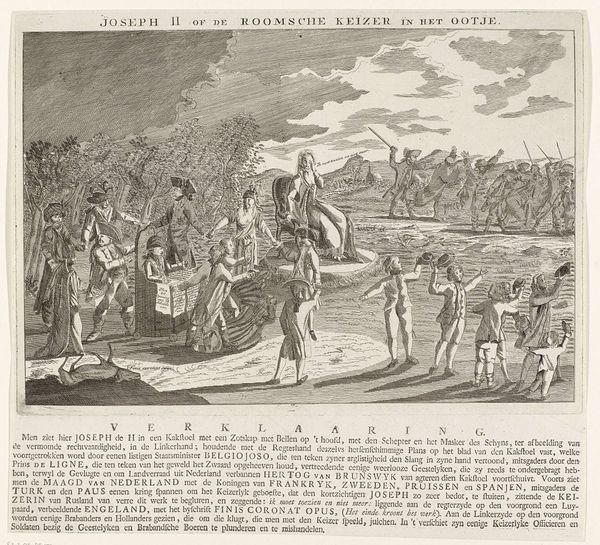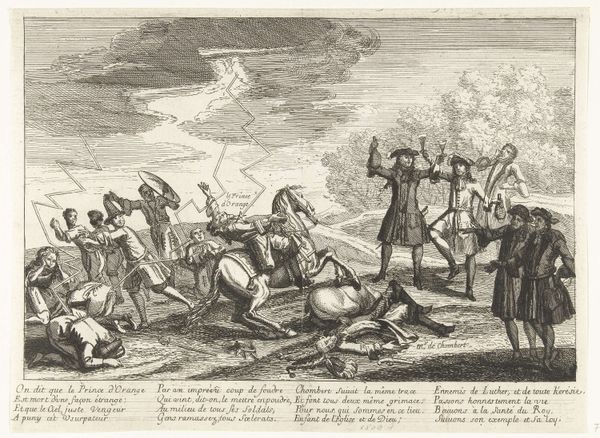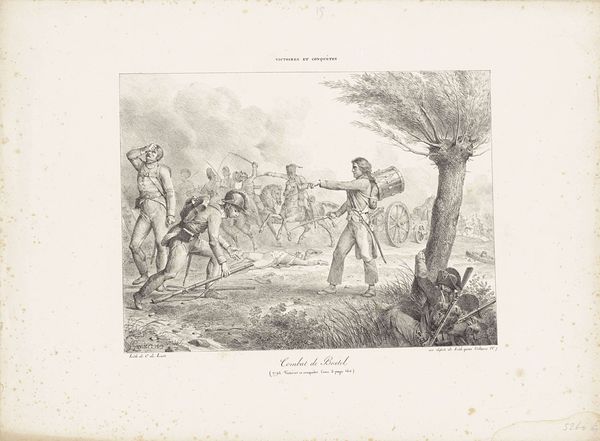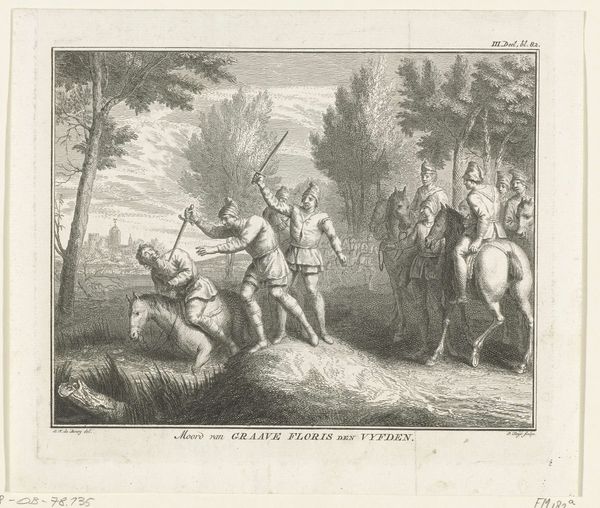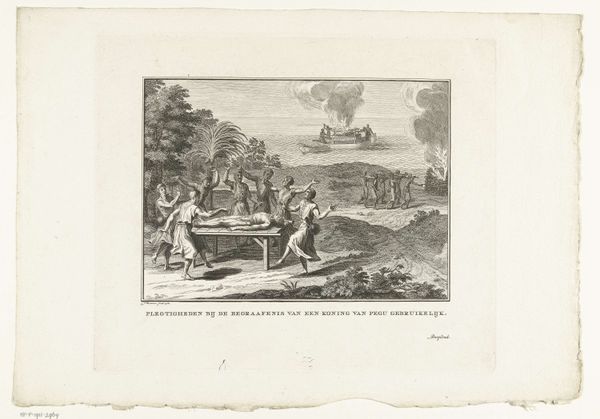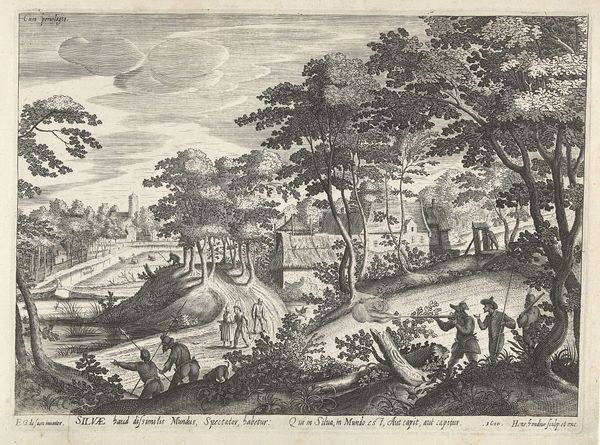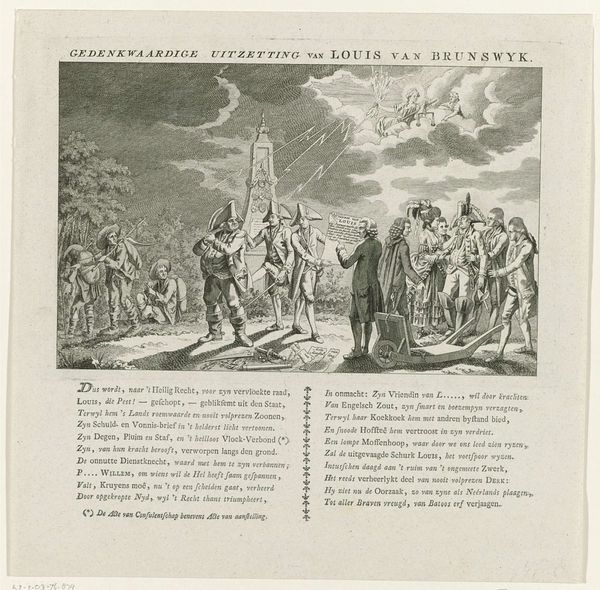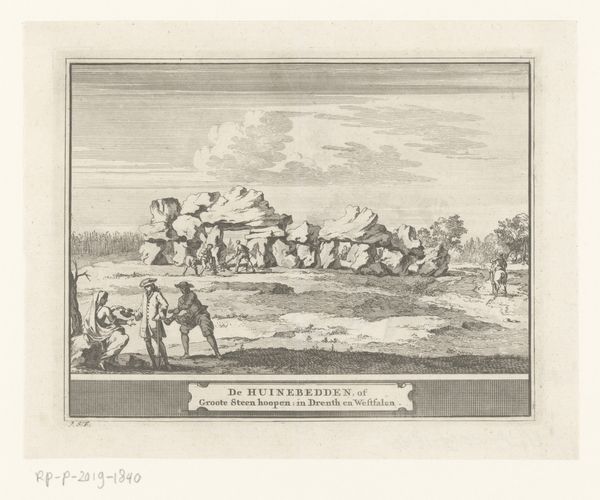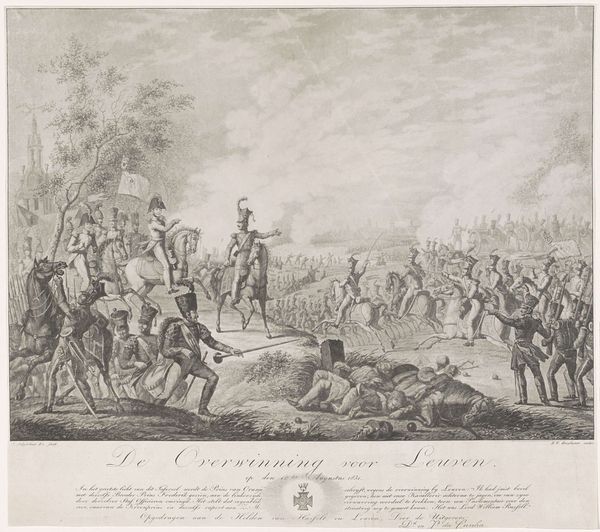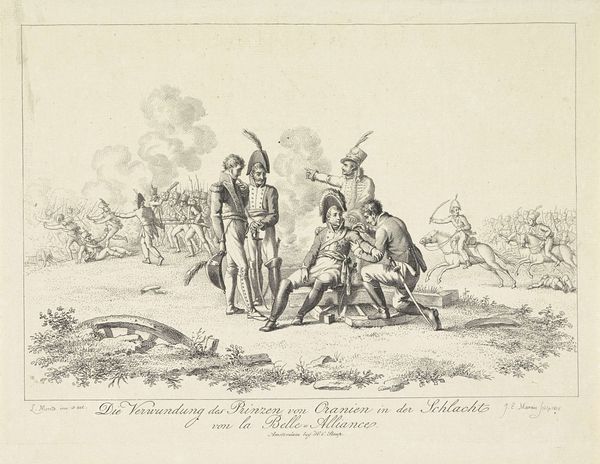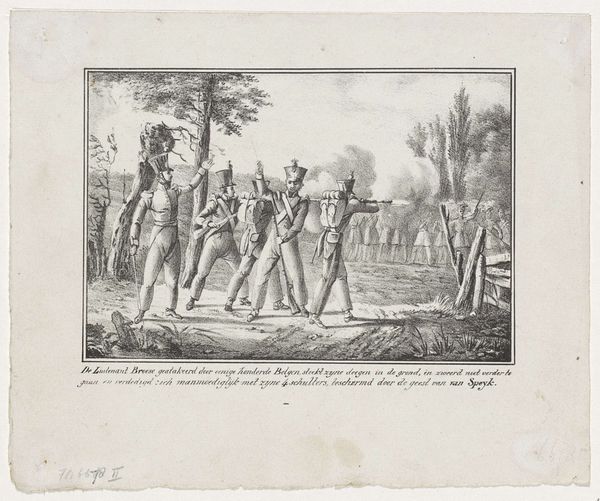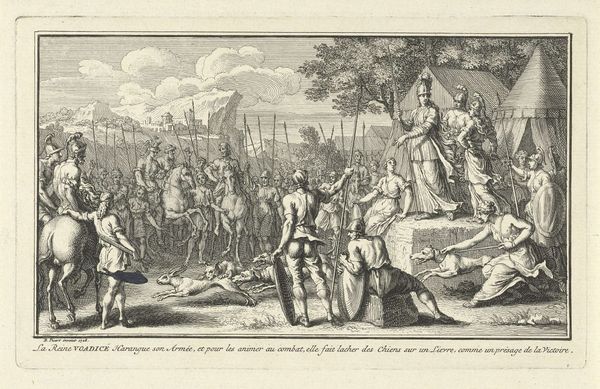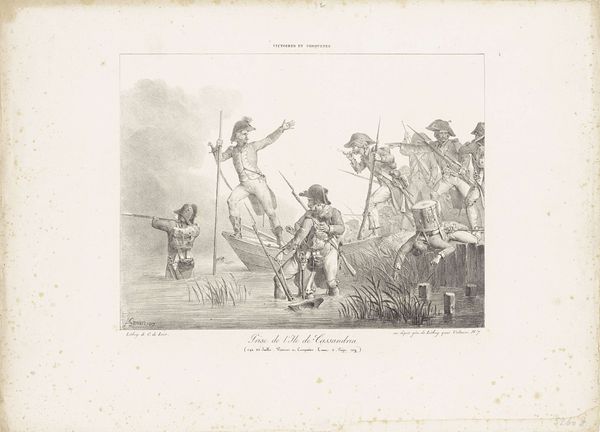
Spotprent op het geschil tussen de Staten-Generaal en de keizer over de Schelde, 1784 1784
0:00
0:00
print, etching, engraving
# print
#
etching
#
history-painting
#
engraving
Dimensions: height 276 mm, width 330 mm
Copyright: Rijks Museum: Open Domain
This print, made in 1784 by an anonymous artist, uses etching to comment on a dispute between the Dutch Republic and the Austrian Emperor over the Scheldt river. Etching is an indirect method of image-making, which involves coating a metal plate with a waxy, acid-resistant substance. The design is then scratched into this layer, exposing the metal beneath. When the plate is immersed in acid, the exposed lines are eaten away, creating grooves. These are then filled with ink and printed onto paper. The crisp, linear quality of the etched lines allows for intricate detail, as you can see in the expressions of the figures and the rendering of the ships. As a multiple, prints like this were a powerful tool for disseminating political messages and shaping public opinion. The relative ease and speed of production, compared to painting or sculpture, made it an ideal medium for responding to current events, reflecting the social and political turmoil of the late 18th century. The choice of etching speaks to the growing importance of accessible forms of visual communication. It challenges the traditional hierarchy of art, by bringing political commentary to a wider audience.
Comments
No comments
Be the first to comment and join the conversation on the ultimate creative platform.
